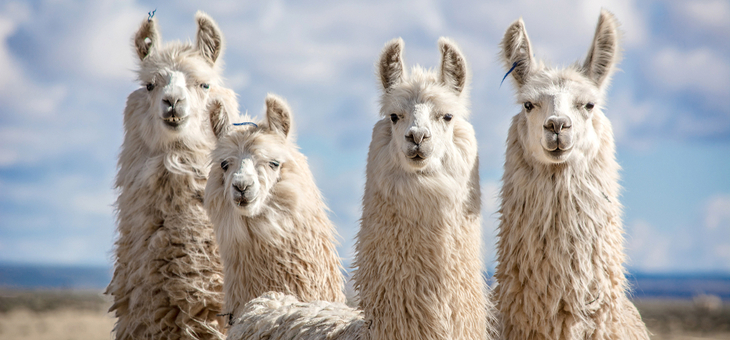UK researchers have discovered that antibodies derived from llamas have been shown to neutralise the SARS-CoV-2 virus in lab tests.
The team, which included researchers from Oxford University and Public Health England, hope that the antibodies, known as nanobodies due to their small size, could eventually be developed as a treatment for patients with severe COVID-19.
Llamas, camels and alpacas naturally produce quantities of small antibodies with a simpler structure that can be turned into nanobodies.
The team engineered their new nanobodies using a collection of antibodies taken from llama blood cells.
They have shown that the nanobodies bind tightly to the spike protein of the SARS-CoV-2 virus, blocking it from entering human cells and stopping infection.
Using advanced imaging with X-rays and electrons at Oxford University, the team also identified that the nanobodies bind to the spike protein in a new and different way to antibodies already discovered.
While there is currently no cure or vaccine for COVID-19, transfusion of critically ill patients with serum from convalesced individuals, which contain human antibodies against the virus, has been shown to greatly improve clinical outcomes.
This process is known as passive immunisation and has been used for more than 100 years to treat various viruses, but it has been difficult to find people with the right antibodies, who are able to give blood safely.
Having a lab-based product, which can be made on demand, would, therefore, be more advantageous and would allow for it to be used earlier in the disease where it is more likely to be effective.
Professor James Naismith from Oxford University said the early results were positive.
“These nanobodies have the potential to be used in a similar way to convalescent serum, effectively stopping progression of the virus in patients who are ill,” he explained.
“We were able to combine one of the nanobodies with a human antibody and show the combination was even more powerful than either alone.
“Combinations are particularly useful since the virus has to change multiple things at the same time to escape; this is very hard for the virus to do.”
Oxford University’s Professor Ray Owens is hopeful that this breakthrough can push into pre-clinical trials soon.
“We have created, analysed and tested the nanobodies in 12 weeks. This has seen the team carry out experiments in just a few days, that would typically take months to complete,” he said.
The team started from a lab-based library of llama antibodies. They are now screening antibodies from Fifi, a llama based at the University of Reading, taken after she was immunised with harmless purified virus proteins.
The team are investigating preliminary results, which show that Fifi’s immune system has produced different antibodies from those already identified, which will enable cocktails of nanobodies to be tested against the virus.
“The electron microscopy structures showed us that the three nanobodies can bind to the virus spike, essentially covering up the portions that the virus uses to enter human cells,” explained Oxford University’s Professor David Stuart.
If you enjoy our content, don’t keep it to yourself. Share our free eNews with your friends and encourage them to sign up.
Related articles:
https://www.yourlifechoices.com.au/health/covid19/silent-spreaders-of-coronavirus
https://www.yourlifechoices.com.au/health/covid19/changes-to-telehealth-coming
https://www.yourlifechoices.com.au/health/covid19/high-blood-sugar-a-covid19-risk

